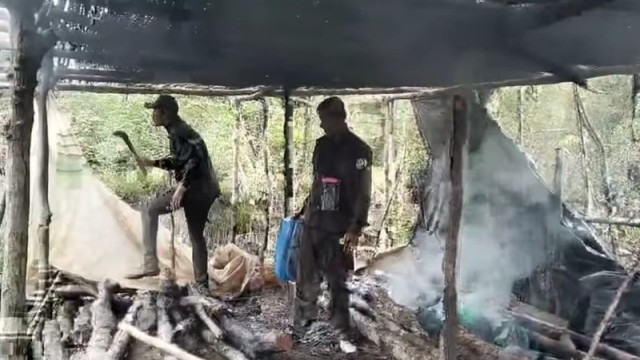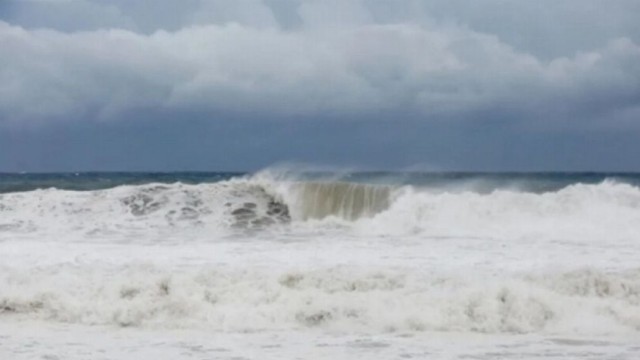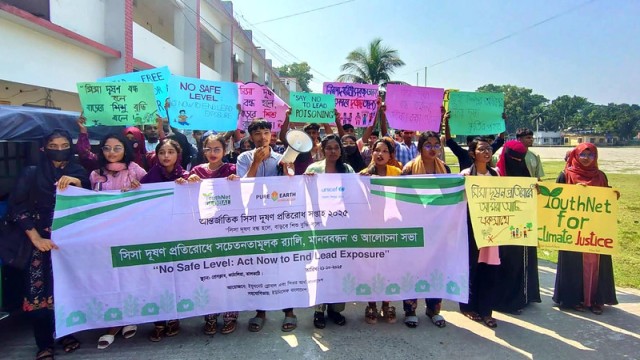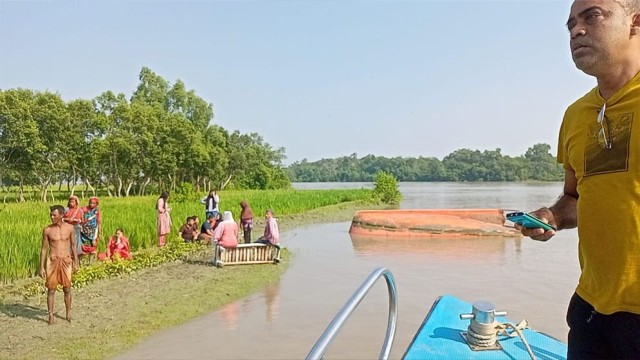Sundarbans, July 27 (V7N) – The Sundarbans, the world’s largest mangrove forest, remains off-limits for harvesting fish, crabs, honey, Golpata, Garjan wood, and other forest resources from June to August due to the breeding season. Tourism and visitor access to the forest are also prohibited during this period to allow the ecosystem to rest. Only forest guards and law enforcement personnel are authorized to be present within the forest, but despite these measures, illegal activities by unscrupulous forest dwellers continue secretly.
Many illegal fishers exploit this closed season by using forbidden nets and poisonous substances in various canals and rivers inside the Sundarbans to catch fish. They also illegally harvest resources by setting up makeshift drying platforms, called "macha," in deep forest areas, where they dry fish and shrimp using firewood and then transport the dried products to cities for sale.
According to the Forest Department, several illegal dry fish processing sites have been destroyed during recent raids in July. On July 23, forest rangers found and destroyed two dry fish huts, seized two boats and three drums in the Chandpai range of East Sundarbans. Earlier, on July 15, four dry fish huts and 20 bags of dried fish were confiscated in the Charaputia area by Smart Team-1 of the Chandpai range. On July 14, a dry fish drying hut was destroyed in a raid by the Smart Patrolling Team in the Sharankhola range, and on July 12, 18 bags of dried fish along with two boats were seized at the mouth of Borodabur canal in Harbaria. Several suspects were arrested in connection with these offenses.
Local fishermen, speaking on condition of anonymity, revealed that during high tide, traps made of mesh netting are set across canals. When the tide recedes, poisonous substances are poured into the traps, causing shrimp and fish to float, which are then collected. The fish are dried on platforms made from various trees such as Sundari, Pasur, and Gewa. The drying process involves spreading mats on these platforms, placing fish on them, and burning firewood beneath to dry the fish, resulting in a product called "shutki" (dried fish).
Villagers reported that the poisonous dried shrimp are not sold in local or wholesale markets but are smuggled from the forest deep into urban areas. The use of Sundari wood for drying is prevalent because it gives the dried fish a reddish color, fetching higher prices in the market. Previously, such drying factories existed in Koyra localities, but most were destroyed after joint operations by the Forest Department and administration. Now, the entire illegal operation has shifted deep into the forest. Some of this dried fish is smuggled to India via the Angtihara route, transported secretly on cargo and lighter ships passing through the Sundarbans.
Fishermen say that only criminals enter the forest secretly during the breeding season to poison fish and shrimp, as it is illegal to bring the catch directly to local markets. Therefore, they dry the catch within the forest and smuggle it to the cities. It is alleged that some corrupt forest officials receive monthly payments to allow this illegal trade to continue.
Mongla Upazila Health Officer Md. Shaheen stated that consuming fish caught with poison not only kills wildlife but also adversely affects human health, causing various diseases.
Dipak Chandra Das, Assistant Forest Conservator of Chandpai Range, confirmed that some illegal fishers poison shrimp in the Sundarbans and dry the catch in firewood-fueled drying huts.
Md. Rezaul Karim Chowdhury, Divisional Forest Officer of East Sundarbans, expressed concern over the illegal drying platforms and poison fishing, highlighting the damage caused to the forest and biodiversity. He said the forest department is intensifying patrols and crackdowns, despite limited manpower, to prevent such crimes.
The continued illegal exploitation threatens both the Sundarbans’ fragile ecosystem and the livelihoods dependent on it, urging urgent and sustained action from authorities and local communities.
END/AHS/SMA/































Comment: